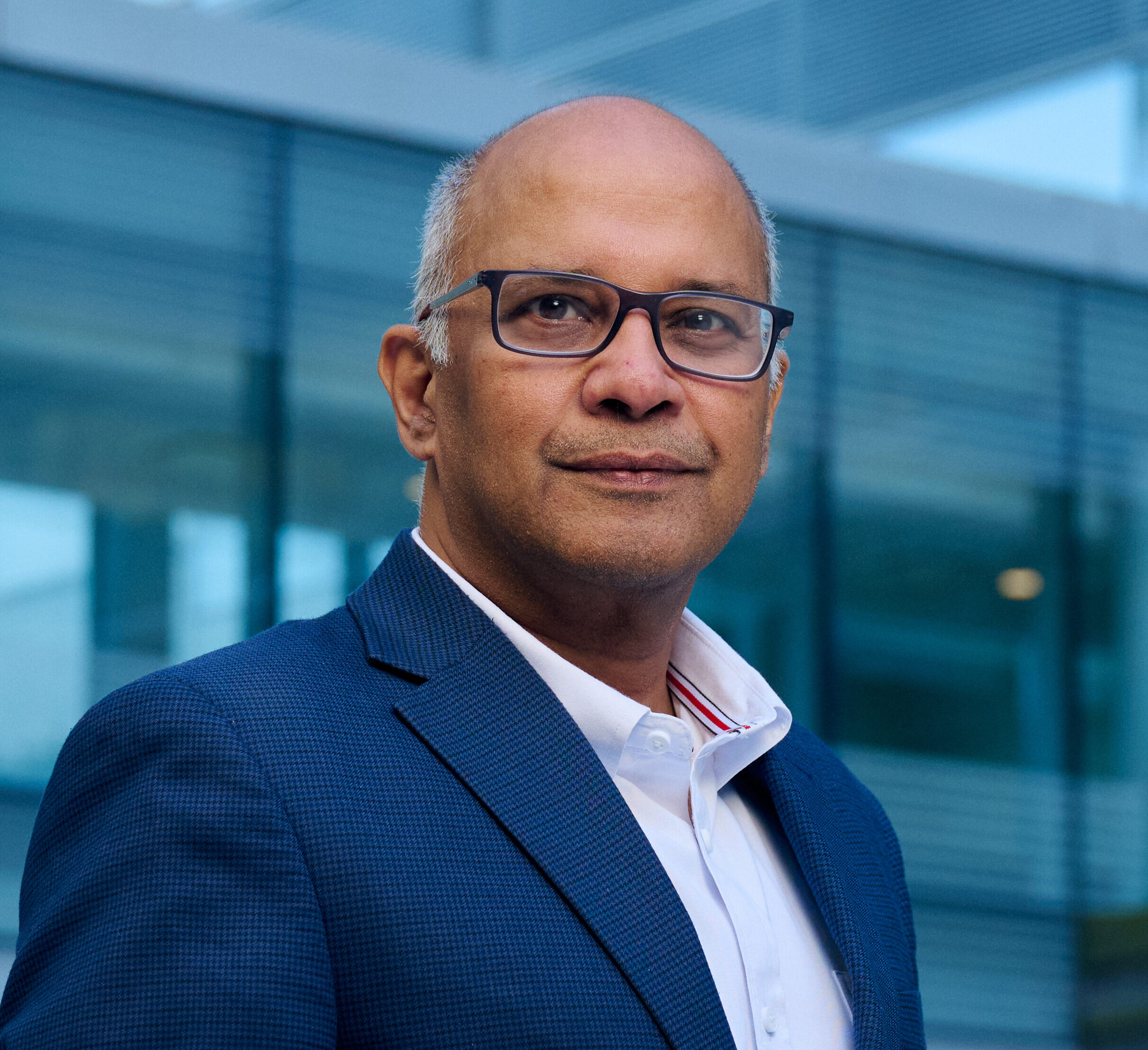At its core, the highly interdisciplinary field of molecular oncology is pursuing an ambitious goal: revealing the complex chemical and biological factors driving the development and progression of individual cancers. The rapid arrival of advanced tools, however, is empowering researchers like Shridar Ganesan, MD, PhD—a leading specialist in cancer instability, the biology of rare cancers, and BRCA1 and BRCA2 tumor suppressors—to tackle this monumental challenge.
Recruited to serve as the inaugural director of the new Center for Molecular Oncology at NYU Langone Health’s Perlmutter Cancer Center, Dr. Ganesan will collaborate with molecular pathologists, clinician researchers, and other experts to integrate a new wealth of genomic data into detailed cancer profiles for every patient. Here, Dr. Ganesan discusses his vision for what molecular oncology can accomplish.
Physician Focus: What led you to focus on molecular oncology as a new tool for cancer care?
Dr. Ganesan: My original work focused on breast cancer and understanding DNA repair. But over the past 12 years, I’ve also been focused on the important role of cancer genomics in understanding our classification and treatment of disease.
Back in 2012, when I was at Rutgers Cancer Institute, we developed one of the earliest molecular tumor boards, in which we started to say “Let’s review all cancers together—adult and pediatric, hematological and solid—and understand them by asking, What are the changes that made these tumor cells in each of these settings different from normal cells?” The intent is both to classify them and ultimately to derive treatments for them.
Physician Focus: What kind of shift in the field is needed to accomplish that?
Dr. Ganesan: My experience seeing a variety of cancers and understanding their genomic landscape has made me realize that a significant challenge in oncology is the lack of proper classification of our diseases. We have syndromes: lung cancer really is a large collection of diseases. Modern oncology doesn’t treat “lung cancer”: it all depends on the genomic landscape, with different lung cancers having different treatments.
“Modern oncology doesn’t treat ‘lung cancer’: it all depends on the genomic landscape, with different lung cancers having different treatments.”
Shridar Ganesan, MD, PhD
It really is a change in how we classify our diseases and understand their biology. We need to break them down from organ-based syndromes into specific diseases that have specific treatments. In oncology, our classification of disease is going to be supplemented by the molecular alterations that are present in individual tumors.
Physician Focus: How do you envision that new focus on molecular alterations shaping cancer care?
Dr. Ganesan: We’re aiming to apply these novel genomic analyses up front for all our patients. We now have all the critical pieces of information and the ability to monitor disease. Pairing that with the great depth of scientific and clinical expertise of the NYU Langone system will allow us to use the tumor mutational profile to inform the diagnosis and treatment of every patient.
Advanced technologies, such as whole-genome sequencing, are also helping us understand that tumors can have a far greater range of genomic alterations than what is detectable with our “standard” sequencing techniques. The aim is to deploy what’s standard now, as well as develop the tools of the future, because we’re not satisfied with the status quo.
“The aim is to deploy what’s standard now, as well as develop the tools of the future, because we’re not satisfied with the status quo.”
Let’s monitor the cancers both in early- and late-stage settings by cell-free DNA analysis to understand when a tumor is coming back and how the tumor is changing under treatment—first to learn about the cancer biology and then to develop more-effective treatments for these patients. That’s our hope.
Physician Focus: How can this effort transform cancer research as well?
Dr. Ganesan: We don’t want to generate data to create a museum of data. We want this to be a living thing for clinical investigators, where the data generation will nucleate clinical research.
When we see patterns, can we then initiate clinical trials? When we detect novel alterations and new mechanisms of resistance, the basic and translational scientists can investigate these in the lab to determine their significance. If we see a novel alteration, we ask: Is this really causing the cancer? Is it targetable? Clinical researchers will help validate these insights, moving them from the lab to the patient.
On top of that, we need to educate the next generation of oncologists, clinicians, and scientists on the value of these data and how to use them. My task will be to implement this with NYU Langone’s researchers and with commercial partners. I’m excited to get started, but it is a long game.
“We don’t want to generate data to create a museum of data. We want this to be a living thing for clinical investigators, where the data generation will nucleate clinical research.”
Physician Focus: Where is the field of molecular oncology heading?
Dr. Ganesan: I think it’s exploding. The number of pathway-specific drugs is taking off, with more and more drugs targeting specific molecular alterations. Immunotherapy is another weapon in the armamentarium. And there’s now a focused effort to better understand why some patients’ cancers respond to therapies while others don’t, and to assess treatment response early.
These molecular tools will be crucial in unraveling these questions: the initial molecular profile of a tumor provides insights into how it developed, which therapies it may respond to, how it might evolve under current treatments. And this knowledge can guide the development of better treatments.






